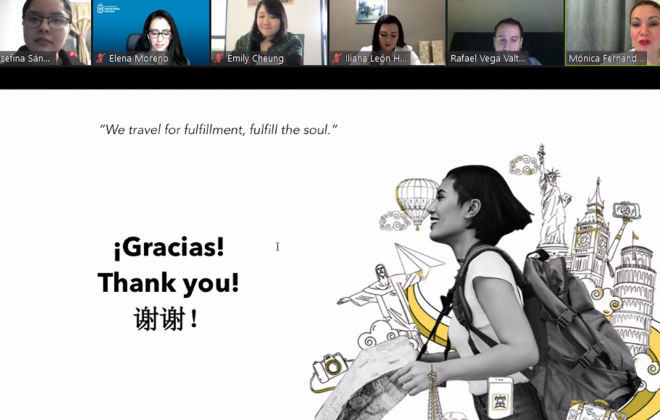Marketing for the Consumer Revolution Caused by COVID-19
The Chinese New Year was right around the corner when the unforeseen virus hit the world causing a wave of changes within consumer behavior due to closures and government-mandated restrictions. Businesses in almost every sector imaginable were hit as social distancing grew and cross-border trade was reduced. This not only called for a change in the way we consume but also the way we work. Consumers became less inclined to spend while businesses were challenged to rapidly innovate and adapt in order to survive. Almost a year has passed with some semblance of a return to normal with the first round of worldwide vaccinations, however, this change from the pandemic has indefinitely brought about a sentiment that will affect the way we approach the market as a whole.
Among all the nations affected, China still remains as the only major nation to achieve the most economic recovery with some cities being able to swiftly contain and regulate the virus without the need for closures or the stringent lockdowns of the past. In Shanghai, for example, faces have been unmasked, bars and restaurants have opened, albeit with a lingering fear of another outbreak. Meanwhile, travel still remains a big hurdle to overcome with China’s government calling for country-wide restraint on its citizens returning to their hometown during the 2021 Lunar vacation. Despite this, recent news of vaccine efficiency and rollout around the world has brought about much-needed hope to consumers and businesses alike. In the UK there was a reported surge of flight and holiday bookings by eager consumers with people deciding to travel from July onwards, indicating an important time for businesses to be within the minds of consumers as they start planning for their long-awaited vacation.
Marketing for the Digitalized Age
Building a good marketing strategy can be a mixed bag of unknowns, especially in traditional or creative marketing that influences consumer sentiment. While conversions may show good results, it’s hard to track the actual impact of the campaign for example, if it were on TV. Meanwhile, consumers’ increased consumption of online services and products has climbed significantly as less time could be spent outside. This allows for marketers to greater access to utilize readily available metrics that can be tracked and implemented by brands from brand discovery to conversion on platforms such as Facebook, Instagram, Netflix, and YouTube where consumers spend most of their time today. McKinsey reported that approximately 33% of consumers in Europe and 41% in the US have increased their usage of online streaming channels in 2021.
On the other hand, it is also important to note that brands are finding it increasingly difficult to capture market share as the modern digital landscape becomes saturated and competitive, raising the bar for all marketers within the ecosystem. Now with the pandemic, many businesses find themselves facing the digital market as offline becomes restricted. This is where full-funnel marketing can play a key role in your business efforts.
Full-funnel Marketing: The New Standard
Oftentimes, marketers will use marketing funnels which is a visualization of the steps that the customer experiences from discovery to purchase or other marketing tactics. The most generic funnel marketing begins from the top which would be the widest part of your funnel. This part will be focused on generating awareness, then lead into interest, desire, and action, which will be the lowest point of the funnel. Essentially, this is the general funnel but it may differ from industry and business type. While some focus heavily on the conversion-side of funnel marketing, there is a growing need for brands to understand the long-term benefits of building a sustainable strategy that involves awareness, interest, conversion, and brand image building, the full-funnel. This is why we recommend a shift from single segment to full-funnel marketing which provides value to the potential and existing customers on multiple levels.
Starting with the awareness, it is the first contact, and marketing efforts are made on gathering as many potential clients as possible. From here, consumers enter the consideration stage which a business must build appeal to the customer over its competition. Finally, there is the conversion or action which is the end of the funnel where brands encourage action. As the funnel progresses downwards, the focus becomes more targeted and after each cycle of the funnel, it will be important to track the results. After analyzing data such as cost per customer acquisition, reach, return on investment, etc.. you will be able to repeat the process in a circular loop to improve the next marketing campaign. It is also important to note that implementing the strategy will require the monitoring of KPIs in multiple channels and stages consumers go through to understand the relations of the comprehensive marketing impact not just in terms of numerical metrics but also sentimental ones. This will require cross-functional collaboration for all those involved in the marketing effort including finance, managers, and other stakeholders. This further allows for brands and owners to efficiently assign budgeting and understand the full scope of their marketing efforts on all levels.
How It’s Being Applied in China
In the case of China, life has been growing ever more digitally integrated: Every imaginable service from insurance to education, payment options, bank loans, as well as offline shopping use some form of digital technology. Shopping experiences and online marketing are now utilized in different ways where even at brick-and-mortar stores, consumers expect to use their mobile devices to scan for discounts or interact with augmented reality video games that are prebuilt into a single application as part of their daily experience. Social commerce is also on the rise with a mixture of content plus e-commerce capabilities activated without having to move in between apps. Apps like WeChat, Alipay, and Weibo are the most famous among those and are used by more than half the Chinese population. This type of technology serves as an important tool for companies that are able to use the immense amount of data generated by approximately 1 billion consumers just within China alone. Of course, not all of that data is available, and to try to navigate the market without understanding the local culture and landscape would just be like swimming in the middle of an unchartered ocean. At the same time, many competitive local tech firms and SaaS tech start-ups are stepping up to fill the market gap with high-quality cost-effective marketing services.
Many businesses that choose to market in China make use of the major social media platforms and generate weekly, or even daily content to engage viewers. The best way to gain awareness in these channels is video content and image-text mixed content. User-generated content as well edutainment videos such as Vlogs and How-to videos are some of the most sought out content. Using the engagement that the content brings, companies will collect and combine data from multiple channels to create highly personalized marketing messages. This includes email marketing, personalized push notifications, and recommendations where open rates, conversions, and click-throughs can be tracked to drive engagement and build consideration. In the conversion part of the funnel, companies compile the data from the engagements and organize clients into tiers: window shoppers, guaranteed buyers, buyers who need a push, and so on to prevent overspending while minimizing time and cost for conversions.
For such marketing needs, China’s market is without a doubt in the mind of many businesses around the world, yet for small to medium-sized businesses there remains a lot of barriers of entry in terms of localization, cost, cultural understanding, and local trends. Shake to Win’s SaaS and social commerce platform stands as a solution by offering a variety of marketing/advertising and e-commerce expertise within China’s digital ecosystem. Our experts have worked with major brands and international institutions such as the Van Gogh Foundation and Levi’s to foster our mission to build bridges between the East and West while catering to the needs of our young consumers looking to appreciate and understand cultures from all over the world. At the same time, we strive to work collaboratively with independent business owners across industries such as art, tourism, retail, design, and more. With our circular service offerings and 20+ experience in China marketing and advertising, we will hold your hand through the process of opening up a key market within your business’s portfolio.
For any business inquiries or collaboration, please feel free to email us at partnership@shaketowin.net and stay tuned for more insights on marketing, tourism, and China.








